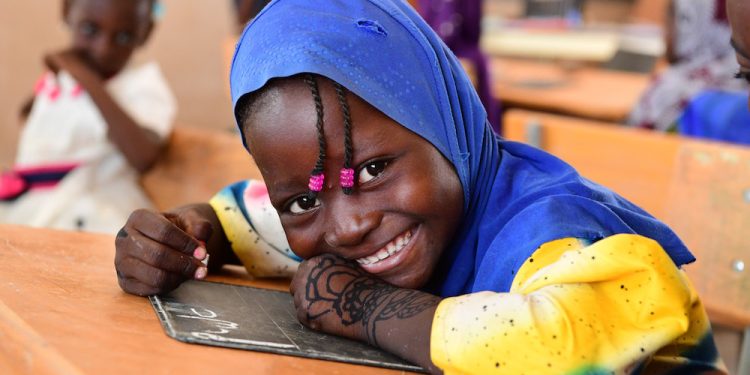Spread the love
Do you know any cool things about learning? Many people need basic schooling to make their dreams come true.
The fight for learning is going strong in today’s digital world, where we’re always working to overcome challenges and make education available everywhere.
Every place has its own unique facts about how they teach people. In this article, we’re going to share 10 fun facts about education from different places around the world. I hope you find them fun and interesting to learn.
1. Students are Paid to go to School in Finland
Did you know that in Finland, the government actually pays students to go to college? Yes, that’s right! It’s one of the most amazing things about education in Finland. Instead of students paying the government or colleges to get an education, it’s the other way around.
Every month, students receive about 500 euros, which is roughly $590. This money helps them cover their living expenses while they focus on their studies. It’s pretty interesting, right?
Now, let’s compare this with another country – the United States. In the U.S., the situation is quite different. Going to college can be really expensive. Every year, students might need to pay tens of thousands of dollars just for tuition.
This doesn’t even include other costs like books, housing, or meals. So, students in the U.S. often need to get loans or scholarships to help pay for college.
These two examples show how different countries have unique approaches to education. In Finland, the government gives money to students to help them go to college.
But in the U.S., students usually have to find ways to pay for their own college education. Both systems have their own pros and cons, but it’s clear that they offer very different experiences to students.
2. Chinese Students are not allowed to use Calculators in School
Here is one of the interesting facts about education. Do you know why Chinese kids are genius at math? The reason is they are never allowed to use a calculator when it comes to math in school. They have to think about everything themselves, quickly becoming math geniuses.
3. The Oldest Operating School is in England and has been Around Since 597 AD
Can you imagine a school that has been teaching students for over 1,400 years? That’s the case with The King’s School in Canterbury, England. It’s thought to be the oldest school in the world that has never stopped teaching. It was started way back in 597 AD. That’s around the same time the ancient city of Rome was falling!
The King’s School wasn’t just any old school either. It was founded by Augustine, a saint of the Christian church. He started the school as a place to teach young men about religion. But over the years, it has grown and changed a lot. Now, it teaches a wide range of subjects to both boys and girls.
Can you picture walking through the halls of a school that old? Think about all the students who have learned there over the centuries. Kings and queens, scientists and writers – they might have sat in the same classrooms as the students do today. It’s like being a part of history just by going to school.
The King’s School is a great example of how education has been valued throughout history. Even in times of change and uncertainty, schools like this one have kept going.
They’ve continued to teach new generations of students, passing on knowledge from one group to the next. So, while The King’s School is very old, it’s also a symbol of the future and the importance of learning.
4. The Green School in Bali, Indonesia is Without Walls
Interestingly, the green school in Bali Indonesia is an innovative and sustainable educational institution that aims to provide a holistic learning experience in an open-air environment for students. The classrooms are built with bamboo structures and have no walls.
RELATED ARTICLES: Is this smart school the future of public school education in Africa?
12 Interesting Facts About Education Around The World They Don’t Teach You In School
7 Interesting Facts About the Science of Learning
5. The Largest School in the World by Number of Students is Located in India
City Montessori School located in Lucknow, Uttar Pradesh, India, is the world’s largest school by the number of students. It is a co-education school that has over 55,000 students and 4,500 staff across 18 campuses in the city. It was established by Dr. Jagdish Gandhi and Dr. Bharti Gandhi in 1959.
6. A School in the Philippines is Constructed Using Only Recycled Pop Bottles
It is called Bottle School, located in San Pablo, Philippines. It took about 9,000 bottles and dozens of volunteers hired by Pepsi to build the structure. Each bottle was filled with sand, water, twigs, and straw to keep them strong. Afterward, the bottles were stacked on top of each other with a cement-like substance to hold them in place to create the entire building.
7. The Deepest School Built on Stilts
The Bajau Laut community in Indonesia has a floating school that is located in the waters of the Coral Triangle. It is known as the “deepest” school as it is built on stilts, suspended above the sea floor.
8. A School in Finland is Built Entirely in a Tree House
A school built entirely in a tree house in the Kakslauttanen Arctic Resort in Finland offers a unique experience for students. The students can learn and admire the scenic arctic landscape from the treetops.
9. In India, Children Attends Mobile Schools
These mobile schools are called schools on wheels. You find them in countries like India, where access to education is limited in rural areas. Schools on Wheels are set up to provide education to children who cannot easily reach traditional schools around their communities.
10. Over 60 languages are Spoken in Mexico which Makes it a Problem for Education
Mexico is a country full of different cultures and languages. It’s a place where variety is a part of everyday life. More than 60 different languages are spoken across the country! This variety makes Mexico a very interesting place. But, it also creates a special challenge when it comes to education.
Imagine being a teacher in a classroom where your students speak different languages. It could be hard to make sure everyone understands the lesson.
Or think about being a student who speaks a language that’s different from the one used in your textbooks. It might be difficult to understand what you’re supposed to learn. These are some of the challenges that come with having so many languages in one country.
The government and schools in Mexico are working hard to overcome these challenges. They’re trying to find ways to teach students in all the different languages.
They’re also working on ways to help students who speak one language learn in a school where another language is used. It’s a big job, but it’s important. Everyone deserves a good education, no matter what language they speak.
So, while having so many languages in one country can make education more challenging, it also makes Mexico a fascinating place. It’s a country where every day is a chance to learn something new, not just in school, but also from the people and cultures all around you.
RELATED ARTICLES: How digital learning can revolutionize skill acquisition.
Interview with Mr Chris Uwaje (The Oracle)
WOWBII INTERACTIVE: Africa comes of age with technology enhanced education
_____________________________________
Did you enjoy reading this? Kindly share the message by forwarding it to your contacts. Education is a critical sector for development and is Africa’s next connection to a new economy.
If this email was forwarded to you, please subscribe here.
www.edutimesafrica.com
And if you want to advertise with us?
Email : hello@edutimes-webapp-wordpress.hdhimq.easypanel.host

























































 EduTimes Africa, a product of Education Times Africa, is a magazine publication that aims to lend its support to close the yawning gap in Africa's educational development.
EduTimes Africa, a product of Education Times Africa, is a magazine publication that aims to lend its support to close the yawning gap in Africa's educational development.


